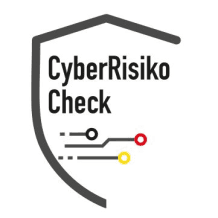What is Zero Trust Identity Management?
Zero Trust Identity Management is a security concept aimed at continuously verifying the identity of a user or device within a network before granting access to resources. It is based on the principle of never trusting a source, be it inside or outside the corporate network, without prior verification.
The Principles of Zero Trust Identity Management
Zero Trust Identity Management is based on several core principles: 1. Trust but verify: Every access must be authenticated and authorized. 2. Minimal access: Only grant the necessary access that users or applications need. 3. Continuous monitoring: Monitor user data and access in real-time to quickly detect anomalies. 4. Identity management: With multi-factor authentication and least privilege.
Why is Zero Trust Identity Management Important?
With the increasing shift of corporate applications to the cloud, the mobile workforce, and the Internet of Things (IoT), traditional security perimeters have become increasingly obsolete. Zero Trust Identity Management offers a solution to tackle these challenges by ensuring that every identity is verified regardless of its location.
Common Challenges in Identity Management
Complexity of managing multiple systems: Legacy systems were not designed to operate across multiple platforms.
Dynamic networks: With BYOD (Bring Your Own Device) and IoT devices, networks are constantly changing.
Increased threats: Cybercriminals are constantly developing new techniques to circumvent traditional security methods.
Implementing Zero Trust Identity Management
To successfully implement Zero Trust, companies should follow these steps:
1. Inventory and Segmentation
Understand which devices and users access your network and segment access accordingly.
2. Use of Multi-Factor Authentication (MFA)
Integrate MFA to ensure that all access requests come from authorized users.
3. Real-time Monitoring and Analysis
Utilize tools to immediately identify and respond to irregularities in user behavior.
4. Least Privilege Principle
Manage access based on the minimum required permissions.
Best Practices for Zero Trust Identity Management
Focus on Training: Raise employee awareness about the threats posed by improper identity management.
Regular Audits: Schedule regular reviews to identify vulnerabilities in your security architecture.
Implement Flexible Policy Control: Control how and when different types of users can access various resources.
Conclusion
Zero Trust Identity Management is crucial for protecting modern corporate networks from increasingly complex threats. By implementing a comprehensive identity verification process, complemented by continuous monitoring and adaptation to new threats, companies can ensure that their digital resources are thoroughly protected.
Related Terms
Identity and Access Management (IAM)
Adaptive Authentication
Mobile Device Security Policies




